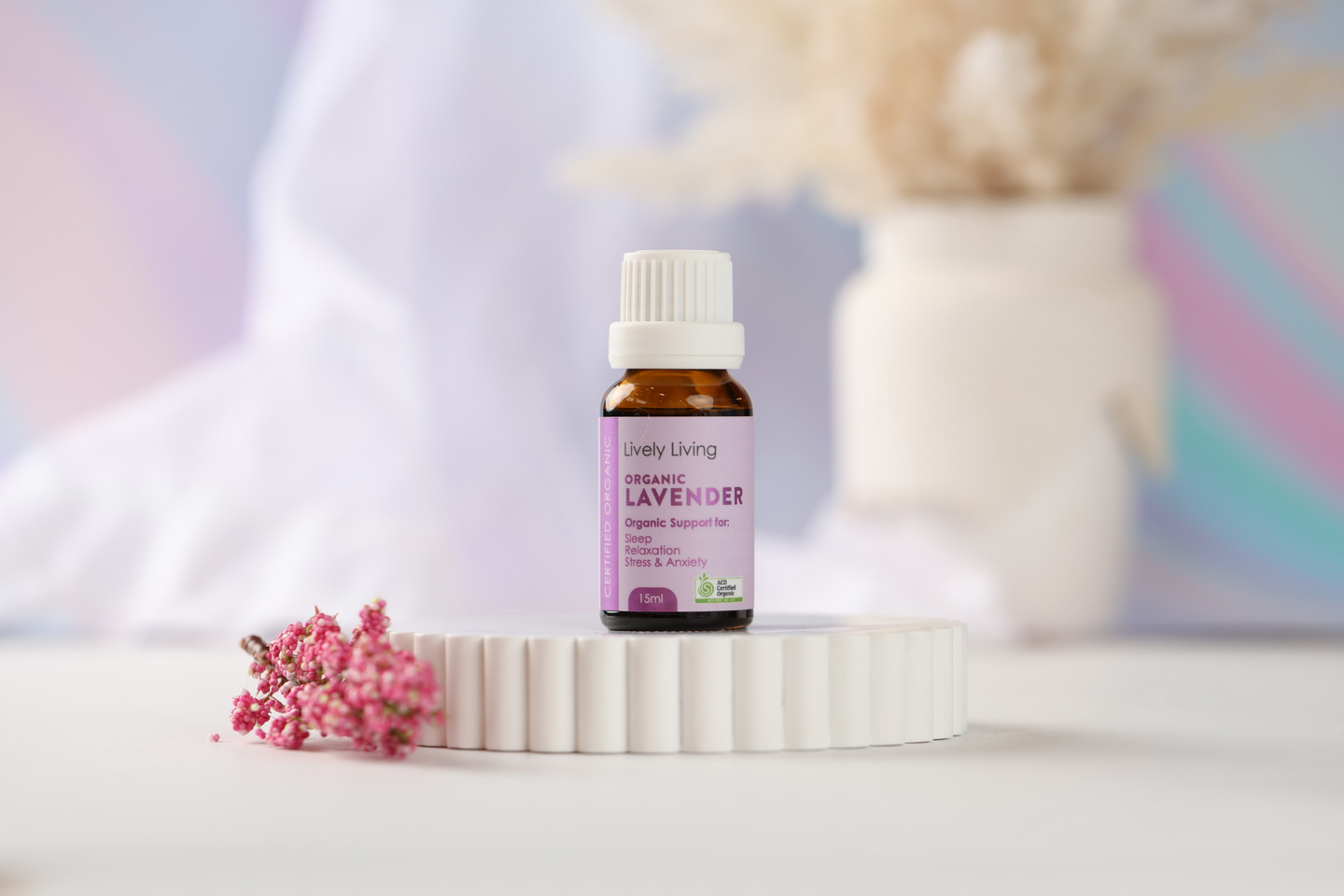Essential Oils for Pain: Best Choices and Uses
Dealing with pain is a universal human experience, but that doesn't make it any less frustrating. We're always searching for ways to manage pain, whether it's a nagging headache, persistent muscle soreness, or the discomfort of inflammation. This leads many people to explore natural remedies, and among them, essential oils for pain stand out as a popular option.
For centuries, people have turned to essential oils for their potential healing properties. But essential oils for pain aren't some new-age trend, they have roots in ancient traditions. Now, science is catching up, with research providing insight into how these aromatic compounds may offer pain relief.
Table Of Contents:
- Why Essential Oils Might Just Be Your New Best Friend
- Top Essential Oils for Pain
- The Do's and Don'ts: Essential Oil Safety Tips
- FAQs About Essential Oils for Pain
- Conclusion
Why Essential Oils Might Just Be Your New Best Friend
Essential oils are highly concentrated plant extracts, capturing the essence of their source - be it flowers, leaves, roots, or bark. They're created through distillation or cold-pressing, resulting in powerful, aromatic liquids. These oils can be used in a variety of ways to potentially impact our physical and emotional well-being.
It's believed that these concentrated compounds interact with our bodies. This is because essential oils are made up of complex chemical compounds that can interact with receptors in our bodies, particularly in the nervous system.
This interaction may influence pain perception and the inflammatory response. Essential oils could be a great addition to your pain management routine.
Pain Relief and Beyond
When we talk about essential oils for pain, we're talking about a wide range of potential benefits:
- Analgesic (Pain-Relieving) Effects: Certain essential oils like Ginger Essential Oil, Lavender, and Peppermint contain compounds that may act directly on pain receptors, reducing the perception of pain.
- Anti-Inflammatory Action: Oils like Chamomile Roman, Eucalyptus, and Bergamot are known for their anti-inflammatory properties, which may help address the underlying cause of some pain.
- Muscle Relaxant Properties: For those suffering from muscle pain and soreness, oils like Marjoram, Rosemary, and Clary Sage are believed to have muscle relaxant properties that could provide relief.
Top Essential Oils for Pain
Now, let's dive into some specific examples and see which oils are known to be most effective for tackling different types of pain:
Lavender Essential Oil for Pain and Headaches
Lavender Essential Oil, with its floral and calming aroma, isn't just a lovely scent for your home - it also boasts powerful pain-relieving qualities. A 2015 study showed its efficacy in managing pain and inflammation. It is especially helpful for tension headaches.
A few drops of lavender essential oil in a diffuser, or even just inhaling the scent directly from the bottle, can provide quick relief. Using lavender essential oil for headaches can be a great alternative to over-the-counter medicine.

Chamomile Roman Essential Oil: A Soothing Remedy for Inflammation
Chamomile Roman Essential Oil is a gentle yet effective choice for inflammation and pain, known for its sweet and calming scent. A 2010 study demonstrated that Chamomile may help in treating muscle and joint pain and can even soothe skin conditions like eczema.
Kunzea Essential Oil: Targeting Muscle Pain
If muscle soreness is your nemesis, then you might want to get acquainted with Kunzea Essential Oil. Its spicy aroma has a warming effect.
A 2016 study showed promising results using Kunzea Oil to relieve pain associated with arthritis. It's great to add to a warm bath or diluted in a carrier oil, such as fractionated coconut oil, for a massage.
Bergamot Essential Oil: Relief from Nerve Pain
Bergamot Essential Oil, known for its citrusy and uplifting aroma, has a secret weapon - its potential to tackle nerve pain, a condition often challenging to treat. Research published in Planta Medica in 2015 highlighted its potential effectiveness for neuropathic pain and arthritis.

The Do's and Don'ts: Essential Oil Safety Tips
While essential oils offer a natural approach to managing discomfort, remember these are potent substances, so safety is paramount.
Dilution Is Key
Never apply essential oils directly to your skin undiluted. They are highly concentrated and can cause irritation or even burns. Always dilute them in a carrier oil like Almond Oil, Coconut Oil, or Jojoba Oil before topical application.
Less Is More
Even when diluted, a little goes a long way. Start with a low concentration (a few drops of essential oil in a tablespoon of carrier oil). If needed, you can gradually increase the concentration but pay close attention to how your skin reacts.
Listen to Your Body
Essential oils can cause allergic reactions in some people. Pay close attention to how your body responds. If you experience any redness, itching, or discomfort, discontinue use immediately. This can vary depending on your sensitivity, the type of oil, and the method of application, so always err on the side of caution. If you have any doubts, talk to your healthcare professional.
FAQs About Essential Oils for Pain
What is the strongest essential oil for pain?
That's subjective. It depends on your specific type of pain. What works well for one person might be completely ineffective for another. Some essential oils with promising pain-relieving qualities are lavender essential oil, bergamot essential oil, kunzea essential oil and peppermint oil.
These oils target a variety of ailments. It really is a personalized experiment. Though seek medical advice if required and start slow with experimentation.
What oil is good for inflammation and pain?
Several oils are known for their anti-inflammatory effects. While essential oils may bring comfort, they shouldn't replace traditional medical care. One of the best essential oils for pain relief is Roman Chamomile.
This essential oil can bring comfort from pain and inflammation. Research has shown Roman Chamomile essential oil may help in treating muscle and joint pain and can even soothe skin conditions like eczema.
What essential oils are good for joint pain and inflammation?
Joint pain and inflammation can be debilitating. Many essential oils for pain might offer relief in this area. Some essential oils that could help are kunzea essential oil and peppermint oil.
These oils contain analgesic properties. Always remember to dilute your essential oils with a carrier oil, such as almond oil.
What essential oil is like ibuprofen?
It's important to highlight that essential oils aren't pharmaceutical drugs. Instead of aiming for a direct ibuprofen replacement, focus on how certain essential oils target pain and inflammation pathways.
Essential oils can work alongside conventional treatment to provide more holistic relief. Many people find essential oils helpful in reducing pain and inflammation.
Conclusion
Essential oils present a promising, natural approach to managing pain, inflammation, and tension. With so many options available, finding what works for you may involve some experimentation, but that's part of the fun. Essential oils can be integrated into your life in a variety of ways, from diffusing for aromatic benefits to using them topically in massage oils or bath soaks.
The most crucial advice is to treat them with respect, using them responsibly. As with any natural therapy, listen to your body. Remember to always consult with your healthcare professional, especially if you have pre-existing conditions or are taking medications.






















